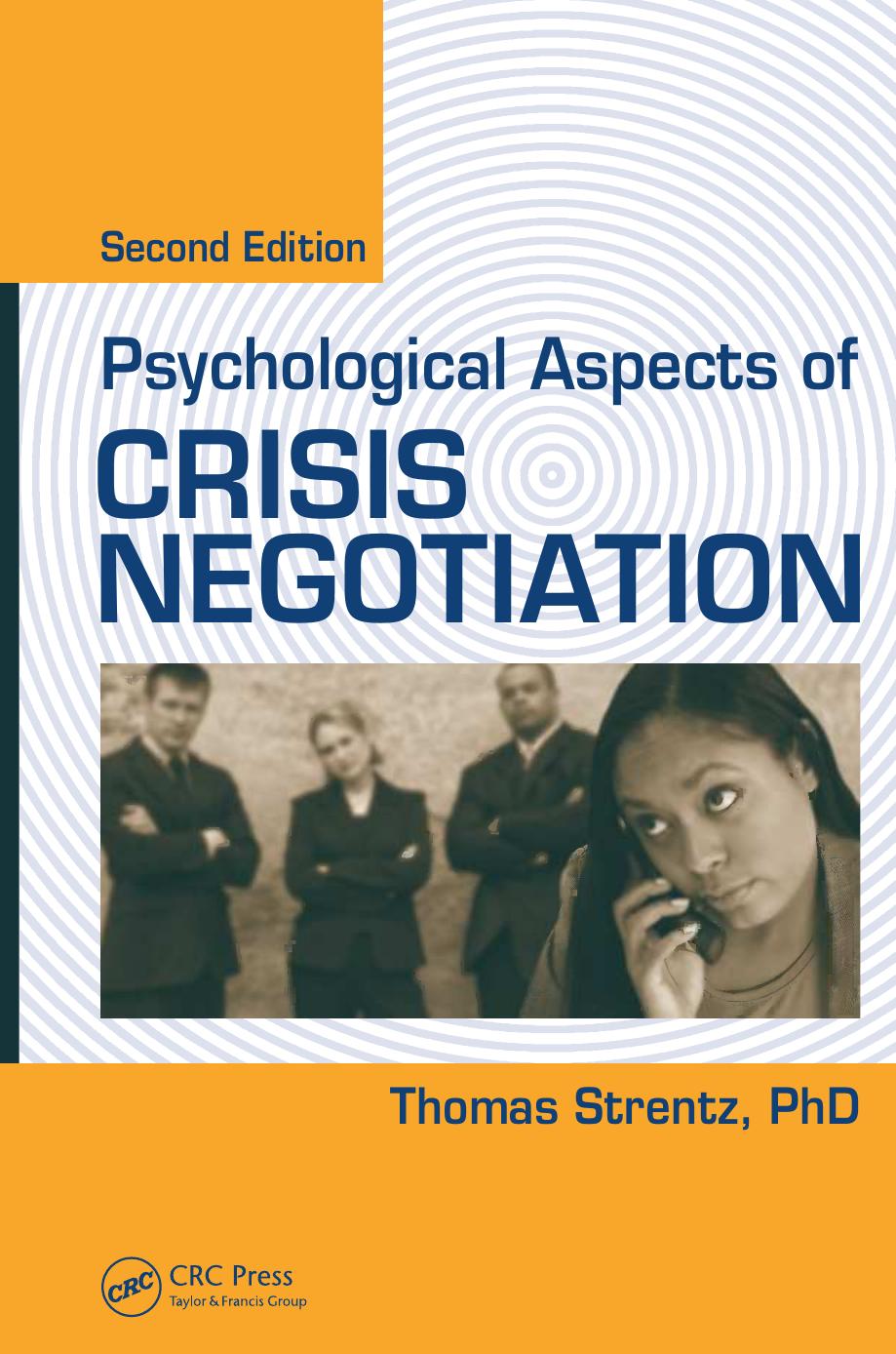Psychological Aspects of Crisis Negotiation, Second Edition by Thomas Strentz

Author:Thomas Strentz [Strentz, Thomas]
Language: eng
Format: mobi, pdf
Publisher: CRC Press
Published: 2012-05-13T14:00:00+00:00
144
Psychological Aspects of Crisis Negotiation, Second Edition
Figure 14.1 Negotiating face to face with a jumper requires a team effort. Note
the weapon and the protective hold of the secondary on the primary negotiator
to prevent the jumper from taking her down.
of the pages in this manual deal with some form of depression. Needless, to
say, this is a serious mental problem.
There are many types and causes of depression. Some people suffer from
a psychotic depression, like a Bipolar Disorder, while others may have a less
severe depression that may not be as long lasting or extreme.
Because bipolar hostage takers are discussed in Chapter 13, they will not
be included here. However, when one is dealing with a depressed and suicidal
person who cannot clearly articulate why he or she is depressed, the negotia-
tor should consider the possibility of a chemical imbalance, like a bipolar dis-
order, as the cause. This is an important and necessary distinction. Trying to
counsel a person who is chemically depressed will be as effective as ordering
a drunk to sober-up. The person with a chemical imbalance needs medica-
tion. Talking may help, but medication is the answer.
One way to differentiate between the two is typically, the “normally
depressed person” has suffered a personal crisis, loss, or serious stressor in
The Suicidal Hostage Holder
145
the last 24 hours. Remember, as set out in Appendix B, stress and crisis are
personal matters, what is a crisis or stressful for some may not affect another.
On the other hand, when the negotiator probes to learn the cause of the
depression, the “chemically depressed person,” will probably say things like,
“Everything in the whole world is shit. Shit, shit, shit.” When asked about
recent life events, crisis, or a loss that may have caused the current depression
and subsequent suicidal behavior, this person is typically unable to point to an
event like losing a job, a relationship gone bad, being passed over for or miss-
ing a promotion, or a recently diagnosed personal or family member illness.
Suicide by Police
This topic is addressed at length in the next chapter. However, some issues,
as they apply to and can be compared and contrasted with solo suicides are
discussed in this chapter on solo suicidal subjects.
This phenomenon is commonly called “suicide by cop” and has many
causes. Certainly, the closing of many mental hospitals without the imple-
mentation and development of the promised alternative care has made a sub-
stantial contribution. Once again, law enforcement must pick up the pieces
and deal with the consequences of poor public planning by our local, state,
and federal legislators.
Snakes with and without Venom
It is very important to separate solo suicidal subjects from those who are
engaged in suicide by cop. Although each of these individuals is engaged
in suicide, their methods are quite different. That is why two separate and
distinct chapters are used to discuss this behavior. To help understand the
difference, consider the analogy of encountering and trying to capture two
snakes. One snake is venomless. The other is poisonous.
The solo suicidal subject is the venomless snake. (See Figure 14.1.) The bite
of this snake wil require some medical attention and perhaps a tetanus shot.
The police officer who
Download
Psychological Aspects of Crisis Negotiation, Second Edition by Thomas Strentz.pdf
This site does not store any files on its server. We only index and link to content provided by other sites. Please contact the content providers to delete copyright contents if any and email us, we'll remove relevant links or contents immediately.
Rewire Your Anxious Brain by Catherine M. Pittman(17598)
Talking to Strangers by Malcolm Gladwell(11902)
The Art of Thinking Clearly by Rolf Dobelli(8859)
Mindhunter: Inside the FBI's Elite Serial Crime Unit by John E. Douglas & Mark Olshaker(7846)
Becoming Supernatural by Dr. Joe Dispenza(7114)
Change Your Questions, Change Your Life by Marilee Adams(6653)
The Road Less Traveled by M. Scott Peck(6645)
Nudge - Improving Decisions about Health, Wealth, and Happiness by Thaler Sunstein(6641)
The Lost Art of Listening by Michael P. Nichols(6481)
Enlightenment Now: The Case for Reason, Science, Humanism, and Progress by Steven Pinker(6412)
Win Bigly by Scott Adams(6325)
Mastermind: How to Think Like Sherlock Holmes by Maria Konnikova(6248)
The Way of Zen by Alan W. Watts(5808)
Daring Greatly by Brene Brown(5648)
Grit by Angela Duckworth(4744)
Big Magic: Creative Living Beyond Fear by Elizabeth Gilbert(4731)
Men In Love by Nancy Friday(4337)
Flow by Mihaly Csikszentmihalyi(4059)
The Four Tendencies by Gretchen Rubin(4028)
